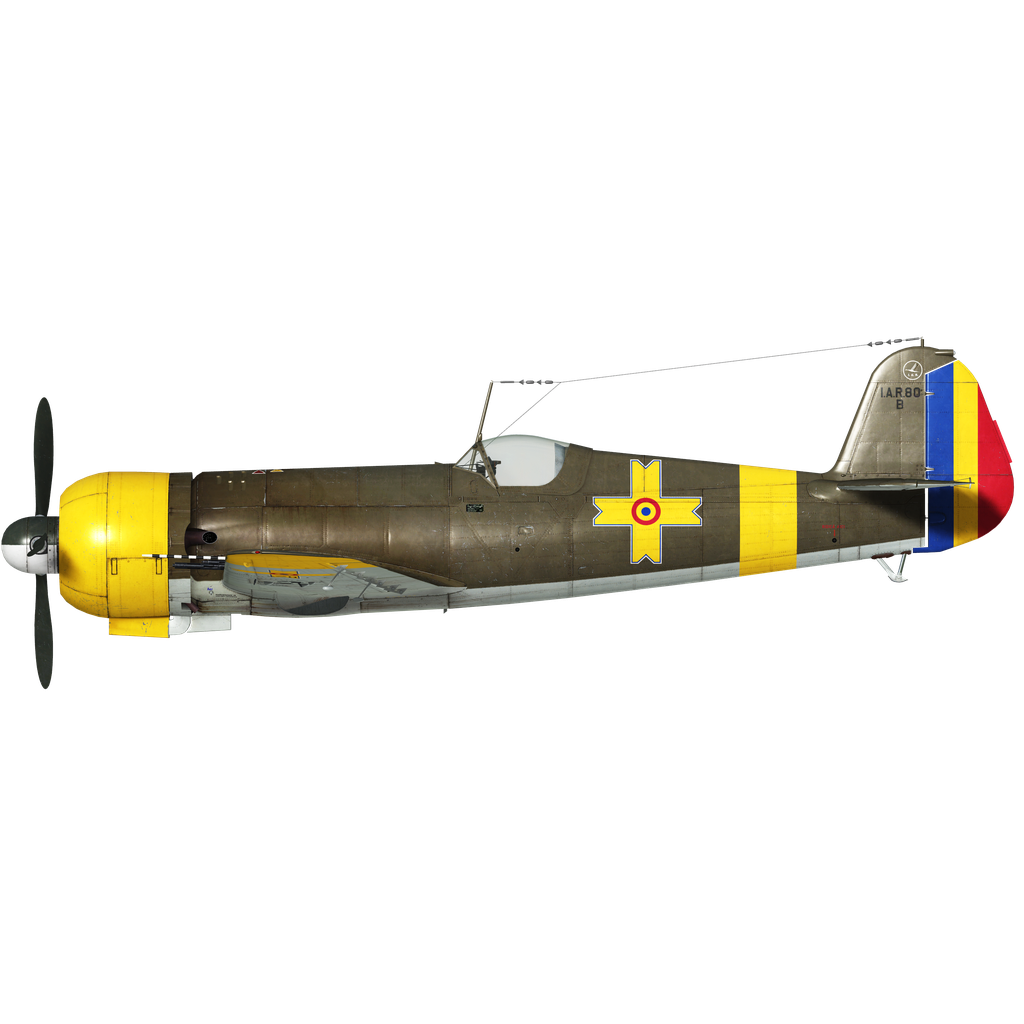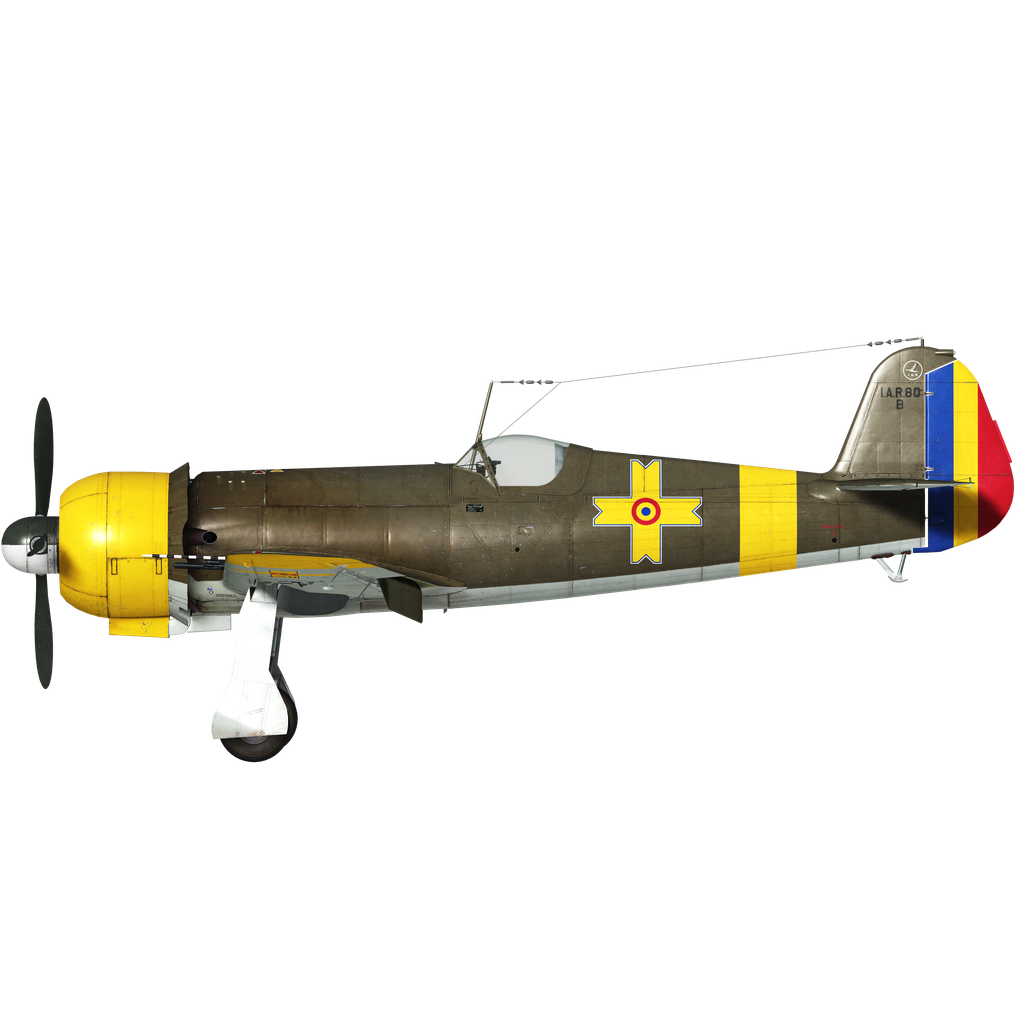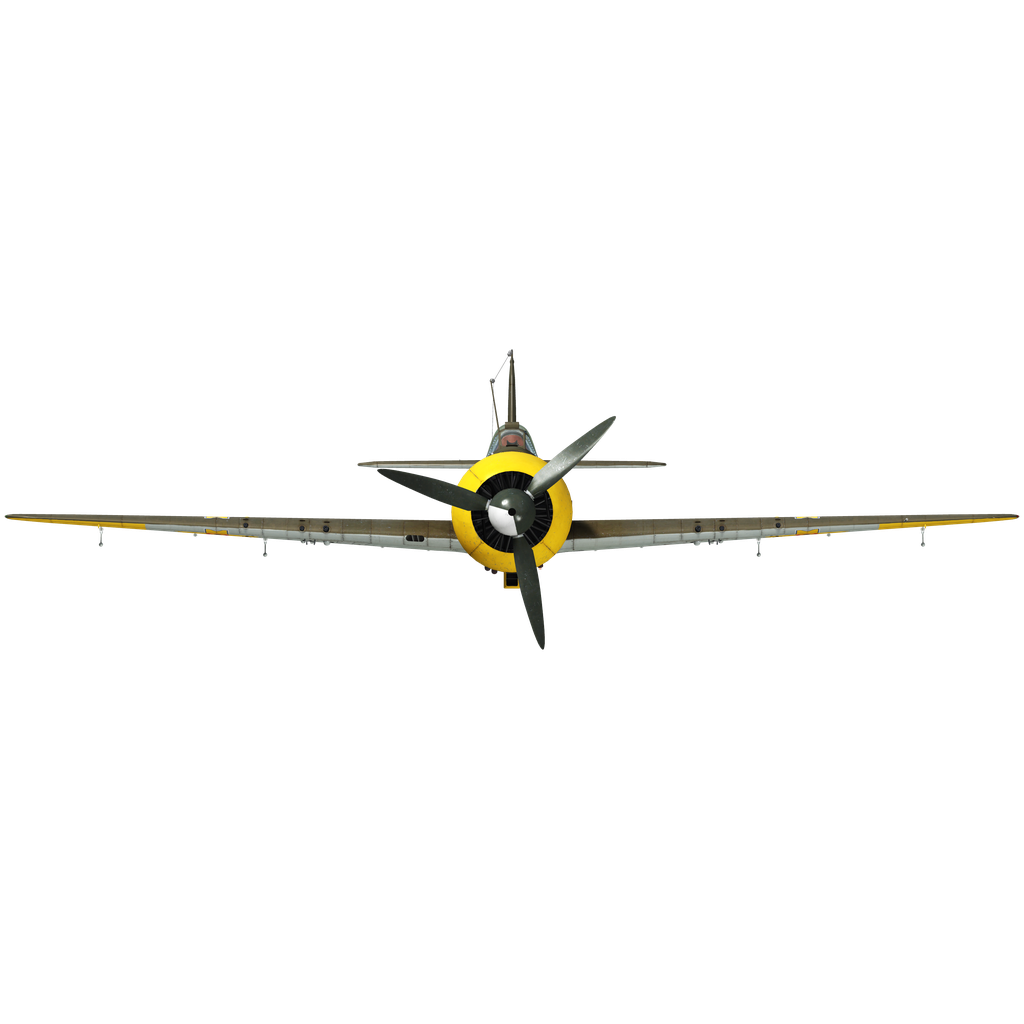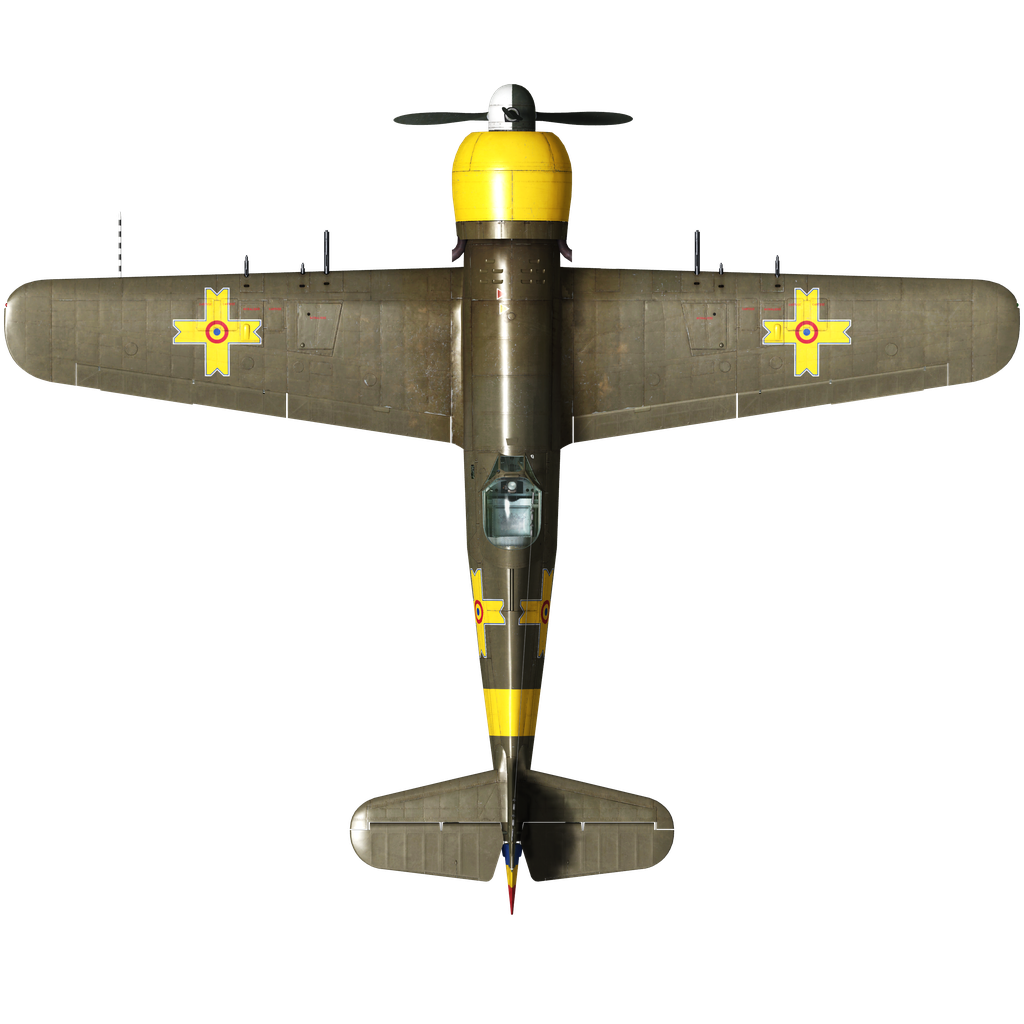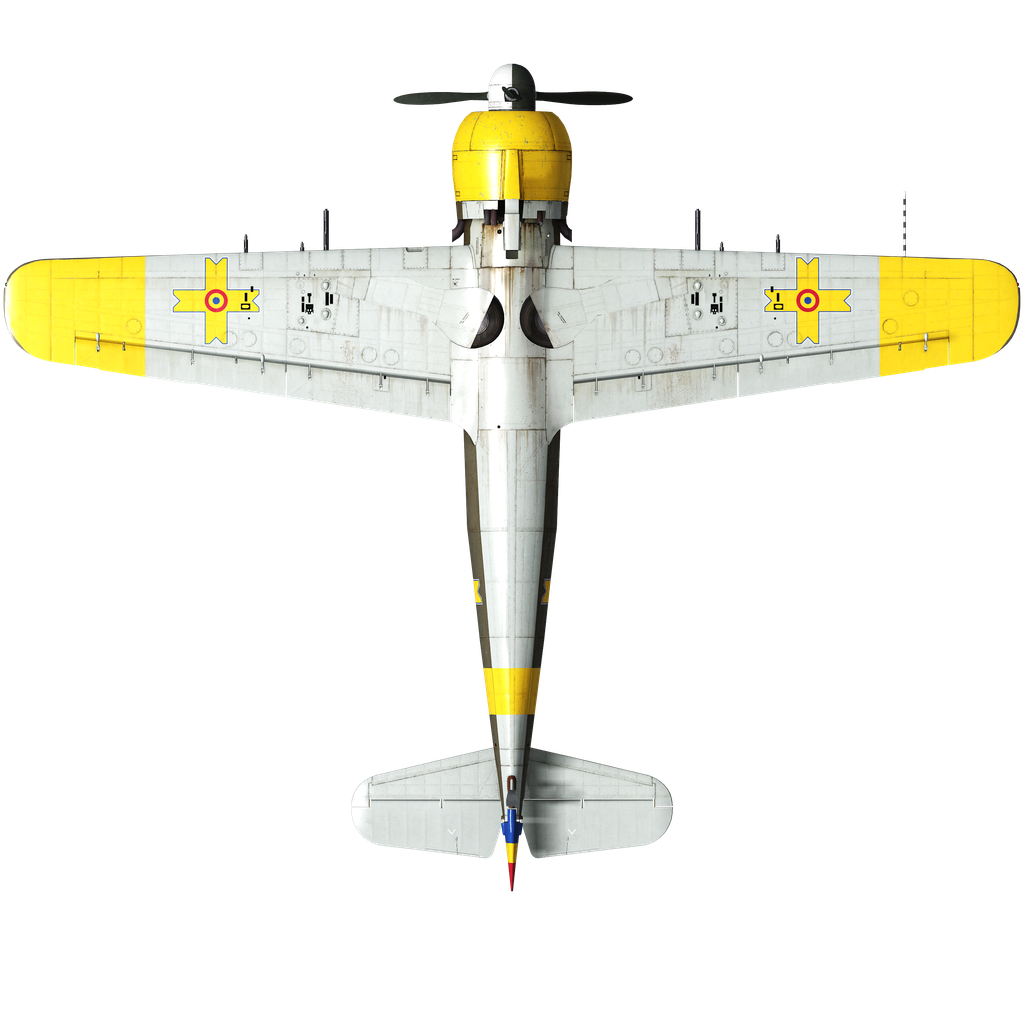In 1925, when an aircraft factory was built in Brasov with the help of French companies, Romania became a member of the countries producing aircraft. The history of this machine began with the purchase in Poland of a license for the PZL P.11f all-metal monoplane fighter. It was a gull-wing monoplane with non-retractable landing gear and an open cockpit. It was developed into the PZL P.24E fighter, which was built under license in Romania in 1937. The Romanian Air Force needed a more modern fighter, and in 1937 Romanian designers began developing such an aircraft to replace the Polish models. A prototype was built and flown in 1939, after which it went into serial production.
The IAR 80 was a single-seat high-speed monoplane with a low wing and retractable landing gear. The wing was an all-metal construction. The ailerons and flaps (hydraulically operated) had a canvas-covered tubular frame. The fuselage was of mixed construction. The forward section up to the cockpit was a trussed tubular frame, while the aft section was a classic semi-monocoque with structural members and stringers. The horizontal stabilizer had struts on the underside. The aircraft was equipped with a version of the French Gnome-Rhone "Mistral-Major" 900 hp engine produced under license in Romania and armed with four 7.92 mm Belgian FN Browning machine guns in the wing. The main disadvantage was the poor forward visibility due to the elongated fuselage forward section, especially dangerous during takeoff and landing. This was due to the placement of the fuel and oil tanks directly behind the engine, in front of the cockpit.
The IAR 80 design was modified during series production in response to operational experience and increased combat effectiveness. The war showed some weaknesses in the IAR 80's armament, especially against the Soviet Il-2. As a result, in 1942 the IAR 80B modification was created, where the pair of machine guns closest to the wing root were replaced by large-caliber ones. In addition, the aircraft were equipped with racks for two drop tanks.
The third production version of the IAR 80B, the 212-230 series, was originally intended to be a dive bomber (IAR 81), so it had a reinforced fuselage. Nevertheless, they were produced as fighters. The machines of this series incorporated all the innovations introduced earlier: the armor of the pilot's seat was reinforced, new radio equipment was installed, and the wing span was increased. The control of the armament (four machine guns of rifle caliber with increased ammunition and two of large caliber) was separate, electric, with two buttons on the control stick of the aircraft. Two 100-liter drop tanks were mounted under the wings. Nineteen aircraft of the 212 series were produced.
Romanian pilots trained together with German pilots for Operation Barbarossa. On the eve of the attack, the 8th Air Group (the equivalent of a Soviet air regiment, only with three squadrons) was moved to the border airfields and began combat missions on June 22, 1941. The 8th Air Group was then joined by the 7th Air Group, and as part of the 4th Air Fleet of the Air Force, the Romanian pilots ensured the advance of the 3rd and 4th Romanian Armies, first on the territory of Bessarabia and then in the Ukraine. Covering the Romanian units, the fighters participated in the Battle of Stalingrad, but from January 1943 all the planes were concentrated on the air defense of Bucharest and the area of Ploesti, protecting the oil fields from raids.
After Romania joined the anti-Axis coalition in September 1944, they fought the Germans in Transylvania, Hungary, and southern Slovakia.
IAR 80s remained in combat until 1945, despite attempts to replace them with more modern aircraft.
1. Radu Brinzan "Iar.80 and Iar.81: Airframe, Systems and Equipment" 2011
2. A. Haustov. "Made in Romania Fighter IAR 80". Journal "Aviation and Time" № 6, 2002.
3. Materials of the site airwar.ru

